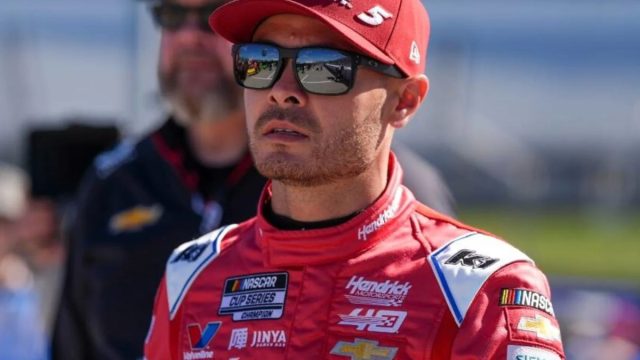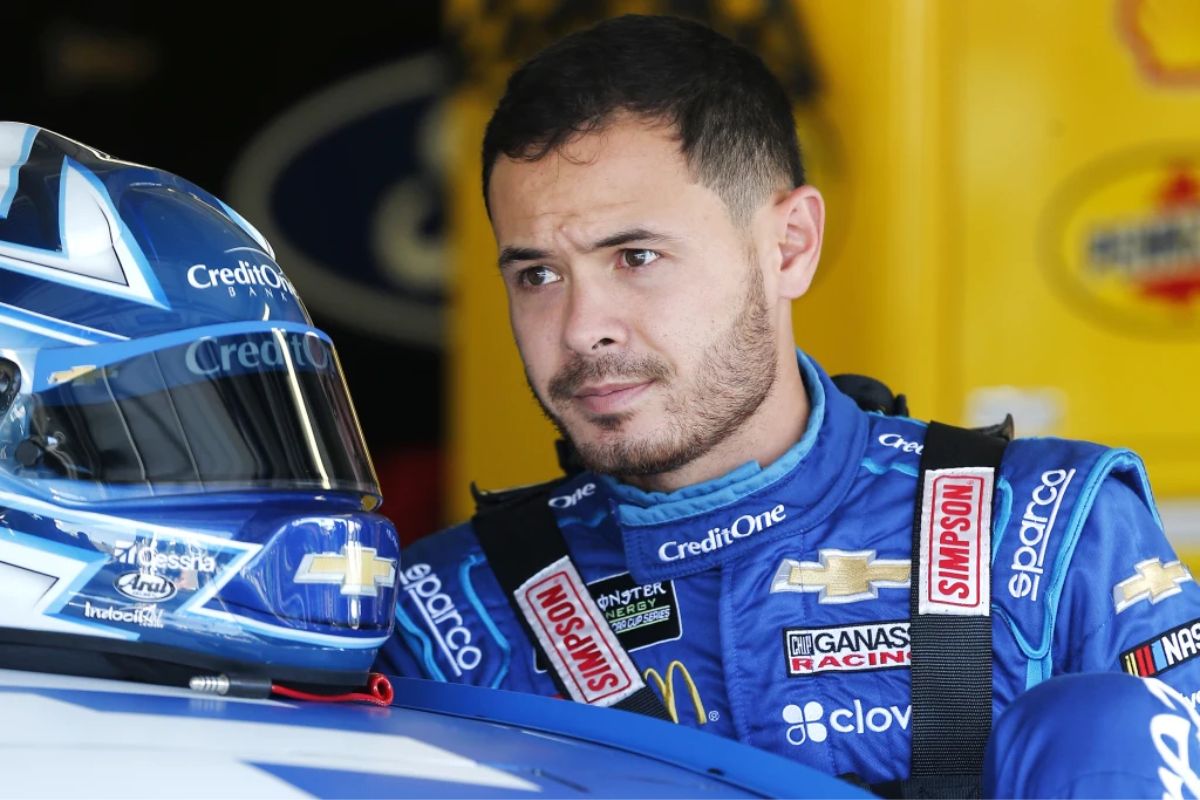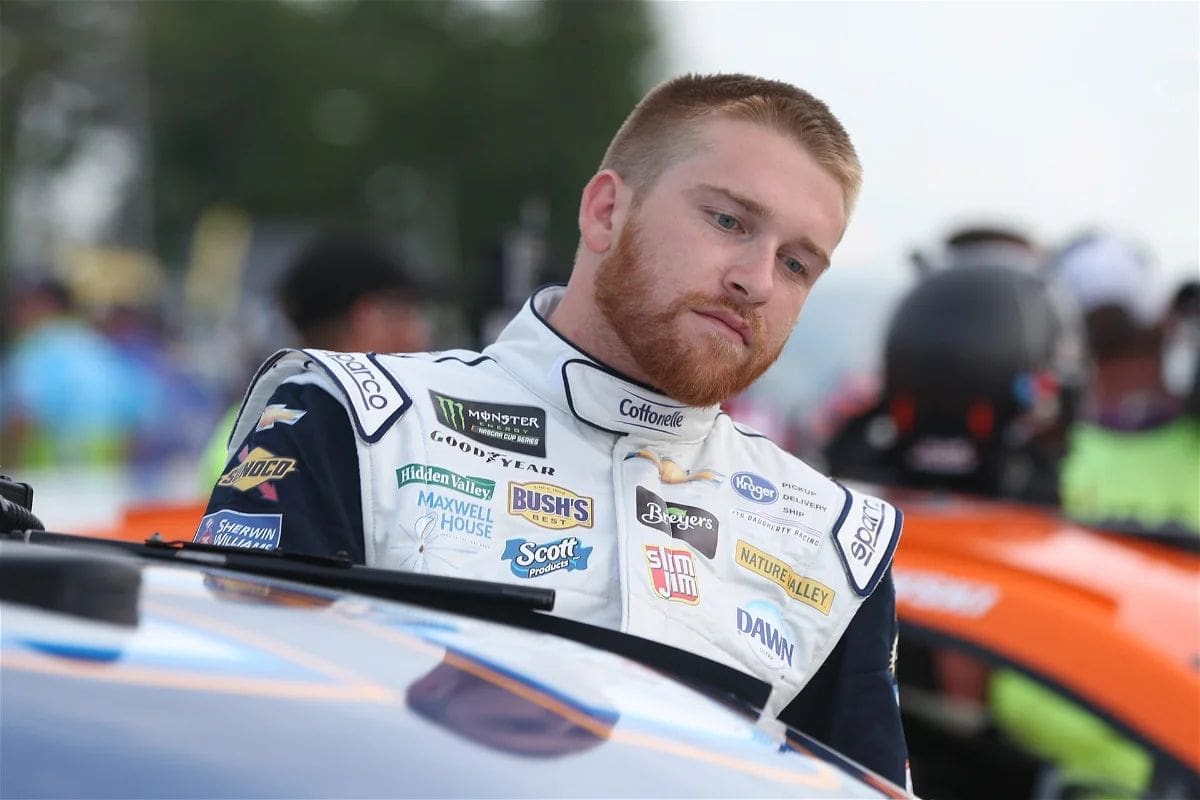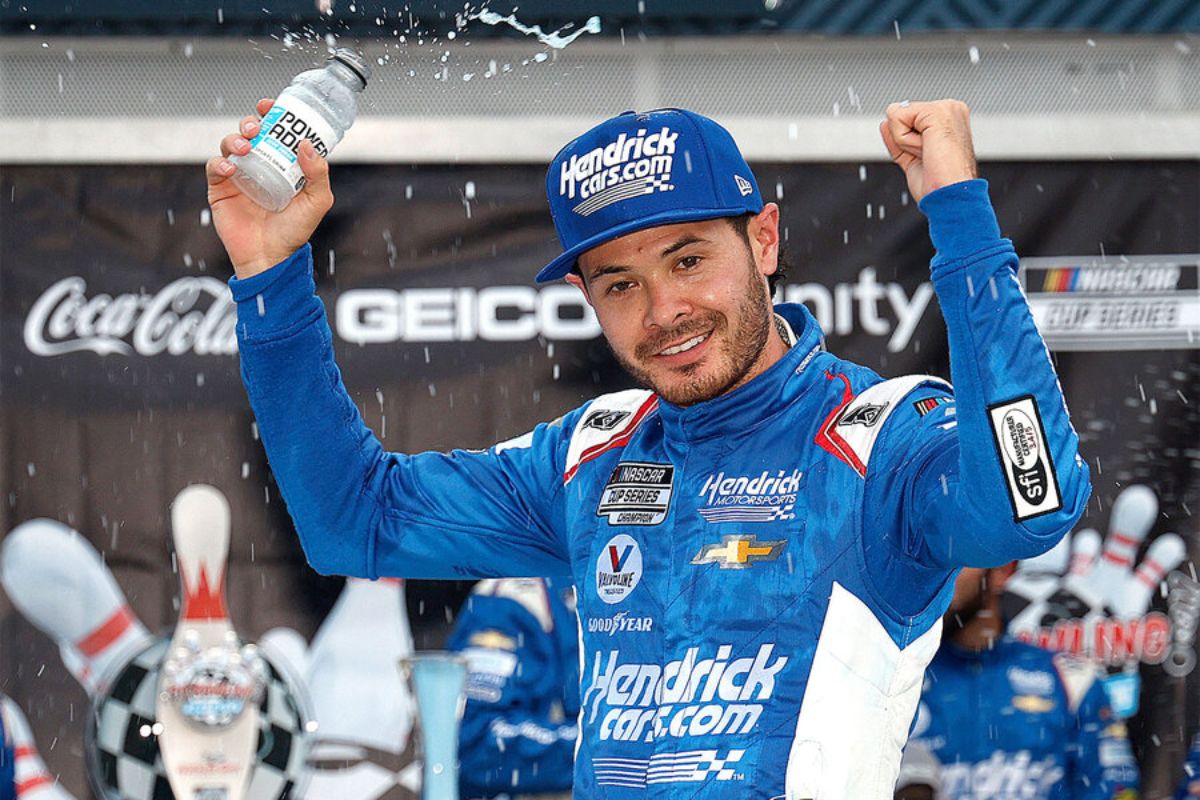Kyle Larson’s Darlington Spin: Kyle Larson‘s exit from the race at Darlington due to a flat tire has ignited a wave of frustration, as a stark reminder of NASCAR’s complexities and inherent unpredictability. The incident, worsened by Larson’s recent victory, brings into question the delicate balance between aggressive driving and strategic conservation, particularly on tracks known for their abrasive surfaces as fans and analysts analyze Larson’s response and the broader implications for his season. This scenario invites a broader discussion on the strategic subtleties that define success in motorsport.
Key Takeaways
- Kyle Larson experienced a sudden tire failure at Darlington, resulting in a crash that ended his race prematurely.
- The incident was partly due to Darlington’s abrasive track surface and Larson’s aggressive driving style.
- Larson’s frustration was heightened by the momentum from a recent win, making the setback at Darlington more impactful.
- Despite the disappointment, Larson demonstrated sportsmanship by accepting responsibility for the crash and analyzing his racing decisions.
- The incident sparked debate within the NASCAR community about racing tactics and the balance between aggressive driving and preserving equipment.
Kyle Larson’s Darlington Disappointment
Kyle Larson’s return to Darlington Raceway, following his victory in Kansas, culminated in disappointment as a sudden flat tire derailed his chances of another win, highlighting the significant nature of NASCAR events. The incident emphasizes the intrinsic unpredictability and the razor-thin margins that define stock car racing’s premier series.
Analyzing the sequence leading up to the tire failure offers deeper insight into the multifold dynamics of NASCAR racing. Tire performance is contingent upon numerous factors, including track conditions, driving style, and vehicle setup. Darlington, known for its abrasive surface and unique, egg-shaped configuration, poses a notorious challenge for tire durability.
Moreover, the strategic decisions made during pit stops, such as tire adjustments and alignment tweaks, can markedly influence tire behavior. In Larson’s case, whether a pit strategy misstep or simply the ending of race wear played a critical role would be important in dissecting the cause of the tire failure.
This episode serves as a stark reminder of the fine line teams must navigate between pushing the limits for performance and ensuring reliability.
Larson’s Reaction and Accountability
Following the race at Darlington, Larson demonstrated commendable sportsmanship by openly accepting responsibility for the critical error that precipitated his crash in turn 3. His forthright acknowledgment of the misjudgment provides a clear insight into the crucial standards of professional conduct expected in racing circuits.
“I was struggling, I got really loose at the end of that long run and William [Byron] caught me. …I just kind of hung out there. I was trying to be really wide away from him and I just stayed wide too long and I got hung in the marbles and hit the wall.” -(kyle)
Larson’s admission came during a post-race interview where he detailed the sequence of events leading up to the crash. His analysis showed a deep understanding of the dynamics at play during the race. By dissecting his decision-making process, Larson provided a rare understanding into the split-second choices that drivers must make under intense inspection.
Moreover, his accountability goes beyond mere admission. It sets a precedent in the racing community about the importance of owning up to one’s actions, which can nurture a culture of honesty and improvement.
Chris Buescher’s Tough Luck
How much more can Chris Buescher endure, as his series of unfortunate events at Darlington once again thwarted a potential victory due to an untimely collision with Tyler Reddick? At Darlington, a track known for its demanding nature and the high skill it requires from drivers, Buescher’s hope of clinching the top spot was visible before the incident.
Analyzing the situation, the collision occurred during a critical phase of the race when drivers make strategic moves to position themselves for the final laps. Buescher, having shown remarkable skill throughout the race, found his efforts nullified in an instant.
In-depth analysis suggests that while luck plays a role, strategic foresight and perhaps a reassessment of race-day tactics might be necessary. For Buescher, each incident not only impacts the race at hand but potentially affects his psychological readiness for subsequent competitions. Moving forward, it will be essential for him and his team to analyze these repetitive scenarios thoroughly to mitigate risks and improve his chances of victory.
Post-Race Confrontation and Apologies
The post-race confrontation between Buescher and Reddick, stemming from their on-track collision, highlighted the significant emotions and tension that often accompany competitive NASCAR events. This incident, occurring at a critical moment in the race, not only affected their individual outcomes but also emphasized the delicate balance drivers must maintain between aggressive competition and strategic racing.
“I tried to back out, the last thing I wanted to do was wreck your car. I’m sorry.”-(tyler)
Reddick’s immediate apology post-race was an attempt to quell the brewing storm, acknowledging his misjudgment which potentially cost Buescher a better finish. His apology, while prompt, seemed to do little to assuage Buescher’s frustrations. The latter’s response, marked by a clear demand for accountability, reflects a broader expectation within NASCAR circles that drivers, while competing fiercely.
Analyzing this incident within the context of NASCAR’s sporting ethos, one observes that such confrontations, while unpleasant, are essential in maintaining the competitive spirit and personal accountability.
Moreover, the public nature of these apologies and confrontations plays a pivotal role in how teams manage their public relations and internal dynamics. It is a delicate dance of maintaining team morale while managing public perception, essential for sponsorship and fan support.
This incident at Darlington thus serves as a microcosm of the broader challenges faced in professional racing, where the interplay of competition, emotion, and professionalism must constantly be negotiated.
Reactions and Reflections
Many in the NASCAR community have expressed varied reactions to the recent tumultuous events at Darlington, highlighting a spectrum of opinions on the nature of competition and sportsmanship within the sport.
The responses can be broadly categorized into three distinct perspectives:
- Criticism of Over-Apologizing:
- Veteran driver Kevin Harvick voiced concerns about the tendency of drivers to excessively apologize for on-track incidents, suggesting that exaggerated apologies can detract from the competitive spirit of NASCAR.
- Emotional Responses and Fan Engagement:
- The emotional aftermath of the spin at Darlington has intensified fan engagement, with many supporters voicing their frustrations and allegiances on social media and other platforms.
- Anticipation of Redemption at the Coca-Cola 600:
- Both fans and drivers are looking forward to the upcoming Coca-Cola 600 as a potential opportunity for redemption.
These diverse reactions illustrate the complex interplay of competition, emotion, and professional conduct in NASCAR, reflecting a community deeply invested in the integrity and thrill of the sport.
News in Brief: Kyle Larson’s Darlington Spin
The incident involving Kyle Larson at Darlington highlights the inherent unpredictability and challenges within NASCAR competitions.
This event, marked by Larson’s unforeseen tire failure, not only stirred frustration among stakeholders but also emphasized the critical influence of track conditions and driving styles on race outcomes.
Such occurrences emphasize the delicate balance drivers must maintain between aggression and caution, ultimately shaping the narratives and outcomes within the sport’s highly competitive environment.
ALSO READ: Kyle Larson Breaks Silence on Harvick’s Cameo Controversy




